Fishing trawler
The 17th century saw the development of an early type of sailing trawler called a Dogger, which commonly operated in the North Sea.[4] Doggers were slow but sturdy, capable of fishing in the rough conditions of the North Sea.By the early 19th century, the fishermen at Brixham needed to expand their fishing area further than ever before due to the ongoing depletion of stocks that was occurring in the overfished waters of South Devon.The Brixham trawler that evolved there was of a sleek build and had a tall gaff rig, which gave the vessel sufficient speed to make long-distance trips out to the fishing grounds in the ocean.The great trawling fleet that built up at Brixham earned the village the title of 'Mother of Deep-Sea Fisheries'.This revolutionary design made large scale trawling in the ocean possible for the first time, resulting in a substantial migration of fishermen from the ports in the South of England, to villages further north, such as Scarborough, Hull, Grimsby, Harwich and Yarmouth, that were points of access to the large fishing grounds in the Atlantic Ocean.The small village of Grimsby grew to become the 'largest fishing port in the world'[6] by the mid 19th century.The earliest purpose-built fishing vessels were designed and made by David Allan in Leith in March 1875, when he converted a drifter to steam power.She was of wooden construction with two masts and carried a gaff-rigged main and mizen using booms, and a single foresail.[12] The first steam boats were made of wood, but steel hulls were soon introduced and were divided into watertight compartments.These boats had a crew of twelve made up of a skipper, driver, fireman (to look after the boiler) and nine deck hands.The steam boats also gained the highest prices for their fish, as they could return quickly to harbour with their fresh catch.In 1947, the company Christian Salvesen, based in Leith, Scotland, refitted a surplus Algerine-class minesweeper (HMS Felicity) with refrigeration equipment and a factory ship stern ramp, to produce the first combined freezer/stern trawler in 1947.Smaller trawlers have wheelhouses, where electronic equipment for navigation, communications, fish detection and trawl sensors are typically arranged about the skipper's chair.In general, the fish are kept fresh by chilling them with ice or refrigerated sea water, or freezing them in blocks.Crew quarters are usually below the wheelhouse and may include bunks, with cot sides to stop the occupant from rolling out in heavy weather.These outriggers are usually fastened to, or at the foot of the mast and extend out over the sides of the vessel during fishing operations.To avoid the boat capsizing if the trawl snags on the sea floor, winch brakes can be installed, along with safety release systems in the boom stays.Until the late 1960s, side trawlers were the most common deepsea boat used in North Atlantic fisheries.They have facilities for preserving fish by freezing, allowing them to remain at sea for extended periods of time.They must operate in areas close to their landing place, and the time such a vessel can spend fishing is limited.They were typically armed with a small naval gun and sometimes depth charges, and were used for patrolling, escorting other vessels and minesweeping.For example, a United States cooperative which operates a fleet of 24 bottom trawlers in Alaskan water reported 25 fatalities over the period 2001–2012.
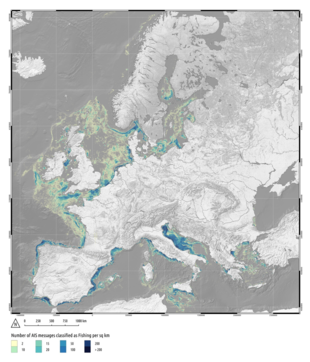


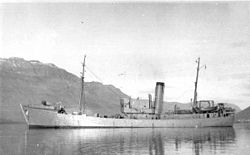

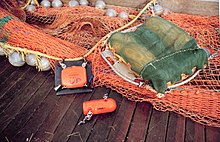
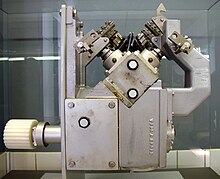

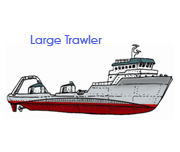
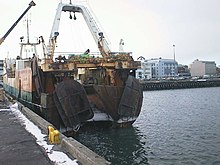

Skagen harbourAutomatic Identification Systemfishing vesselfishing trawlsfishing netshorsepowerfactory shipHistory of fishingWilliam Adolphus KnellNational Maritime MuseumDoggerNorth SeaDutch wordcodfishBrixhamoverfishedSouth DevonBrixham trawlergaff rigScarboroughGrimsbyHarwichYarmouthAtlantic OceanGrimsby Dock Companyhydraulic powerGrimsby Dock TowerWilliam ArmstrongNetherlandsScandinaviascrew-propelledsteam trawlerGrantonFranceBelgiumWest Indiessteam boatswatertightwheelhousedeckhousemizzencapstanforedeckskipperweatherHNoMS HonningsvågIcelandWorld War IdieselturbinesWorld War IIChristian SalvesenAlgerine-class minesweeperAberdeenTorry Research Stationradio navigation aidsfish findersCold Warspy shipsdeckedsuperstructurewincheselectronic navigationdeckheadautopilotmaritime distressEPIRBsFish detectionechosoundersmensurationstrawl eyesfilletingfish processingmechanically gutted and filletedfish oilfish mealcot sidesboiler roomoil frocksoutriggerscapstansshrimpbollardsWayback Machinebeam trawlflatfishotter boardsPelagicPair trawlersRoss TigerArctic Corsairbottom trawlermidwaterbottom trawlinggantryhigh seasNaval trawlerDrifter (fishing boat)Fishing Tug Katherine VNet cutter (fisheries patrol)Recreational trawlerTrolling (fishing)BibcodeThe IndependentNational Fishing Heritage CentreFishing vesselsDriftersFactory shipsFishing fleetLonglinersResearch vesselsSeinersWhalersTraditionalTraditional fishing boatsArmadahanBangkaBasniganBawleyBokkuraCaïqueCamakauCape IslanderCoracleCurrachDugout